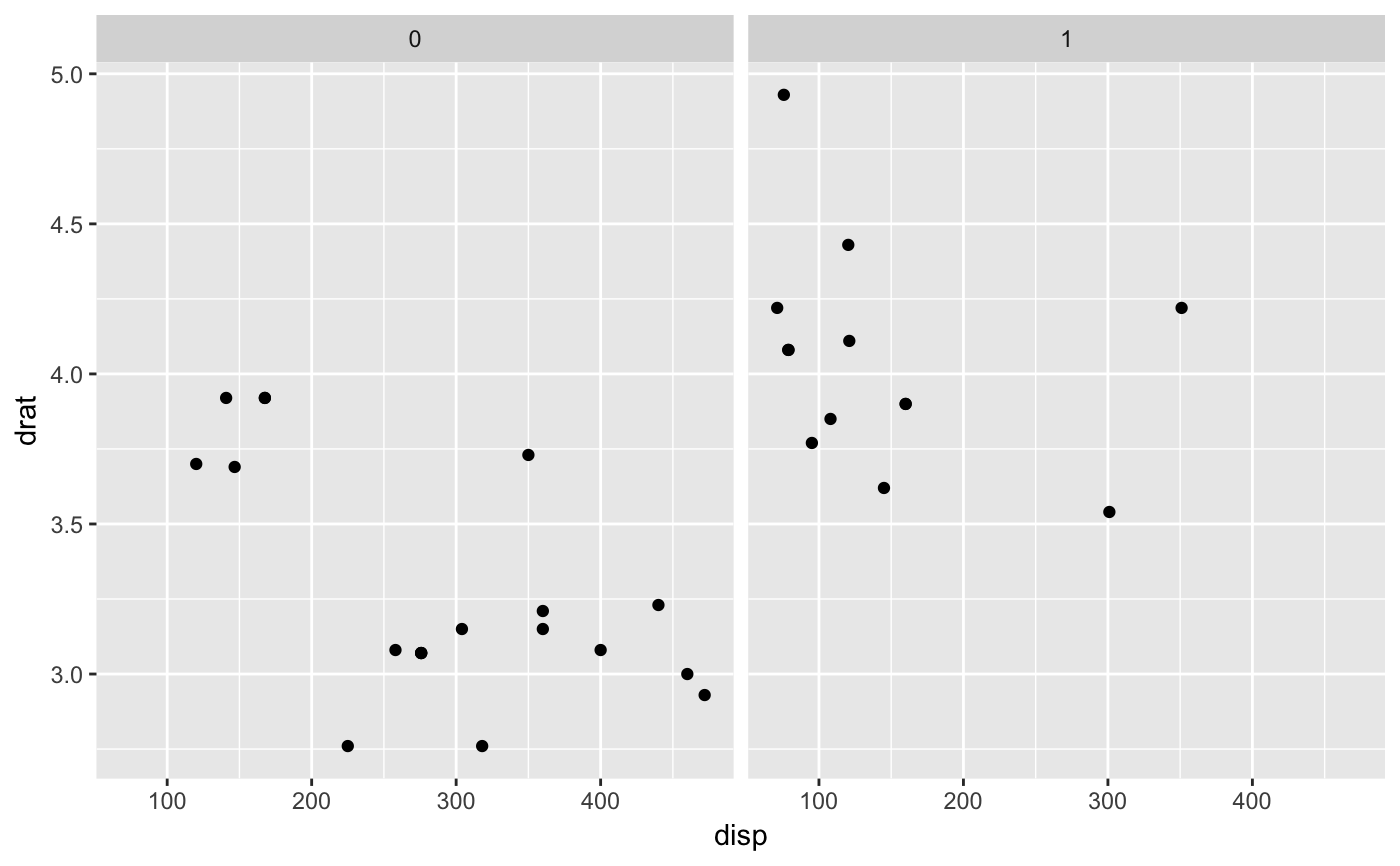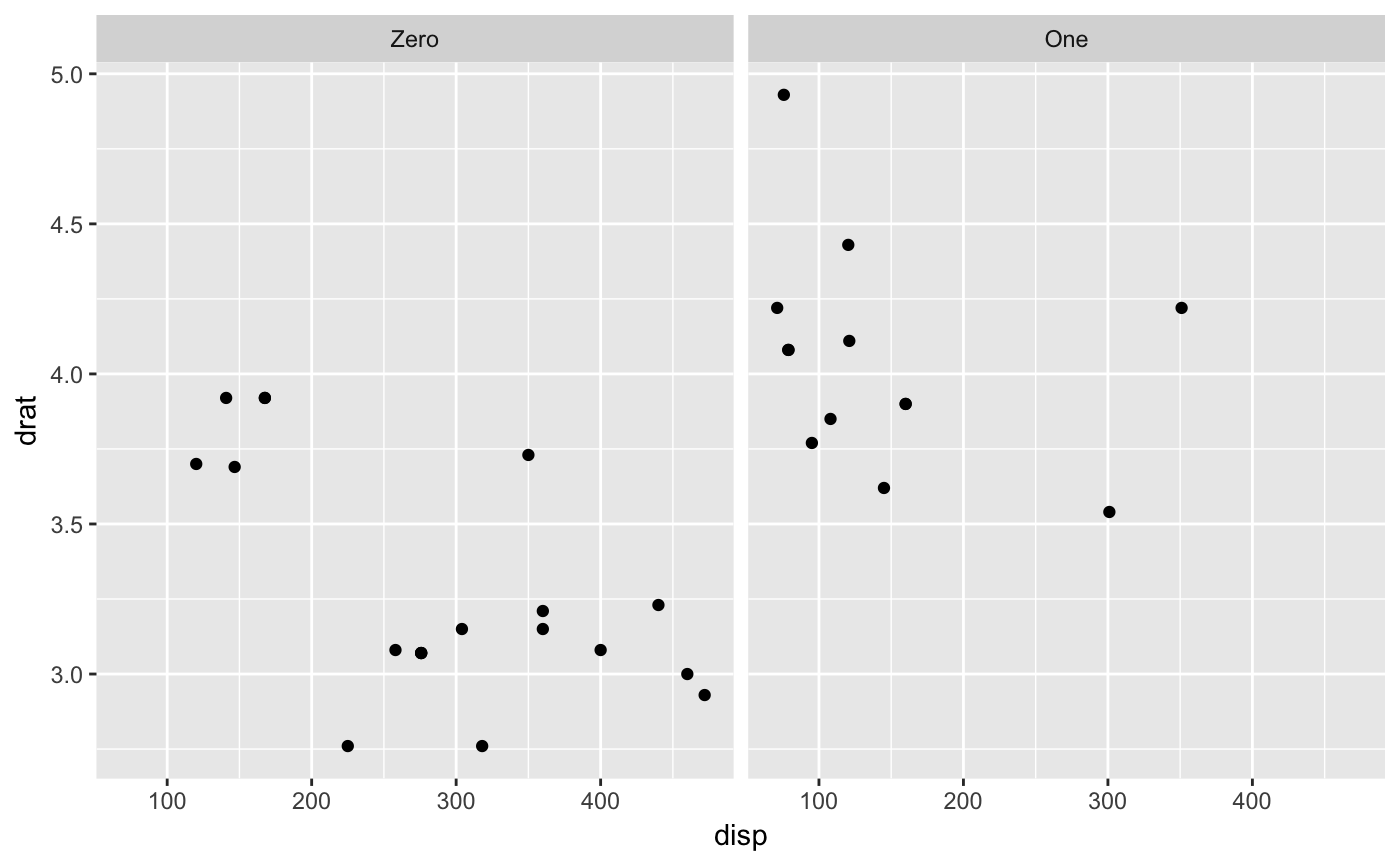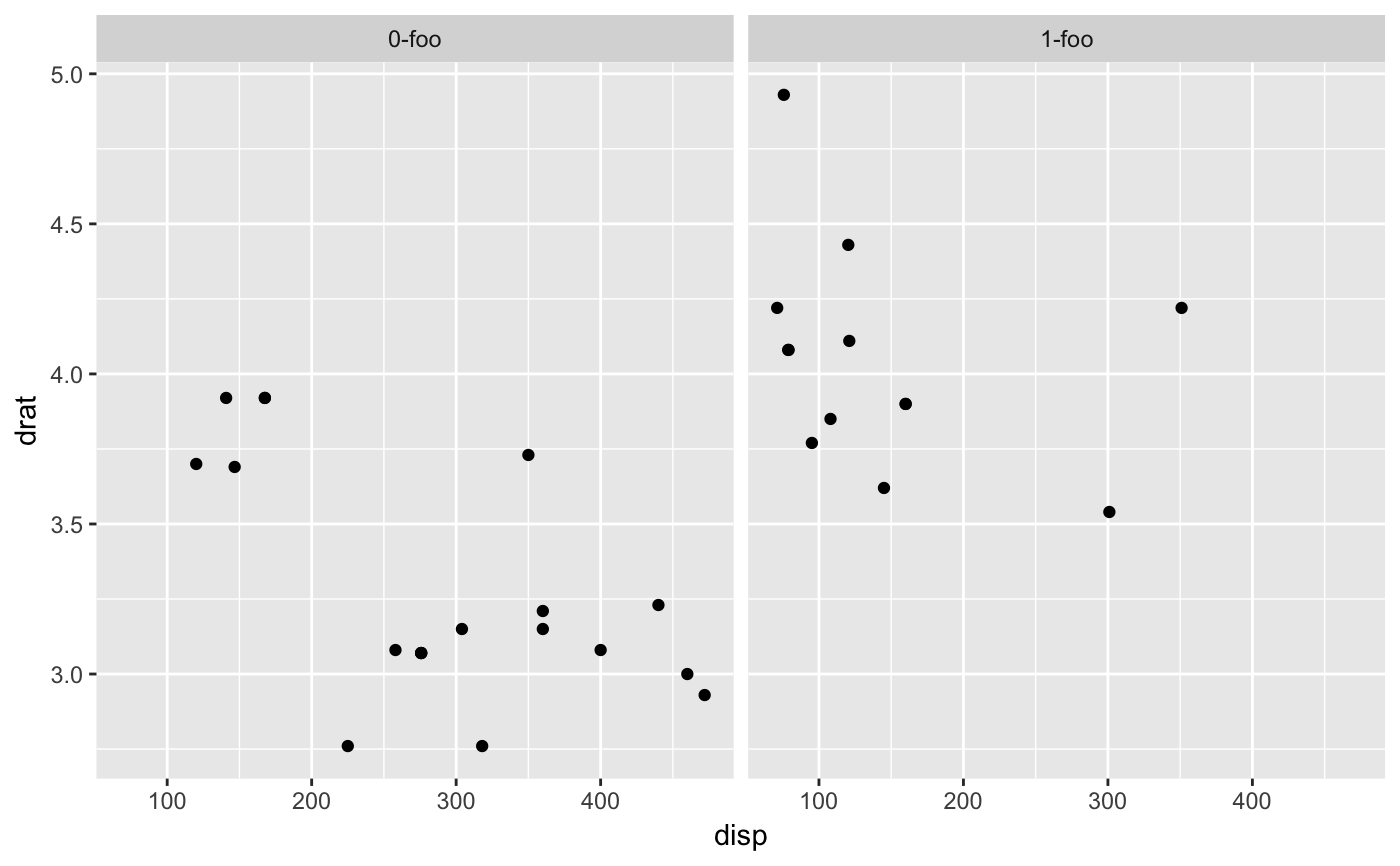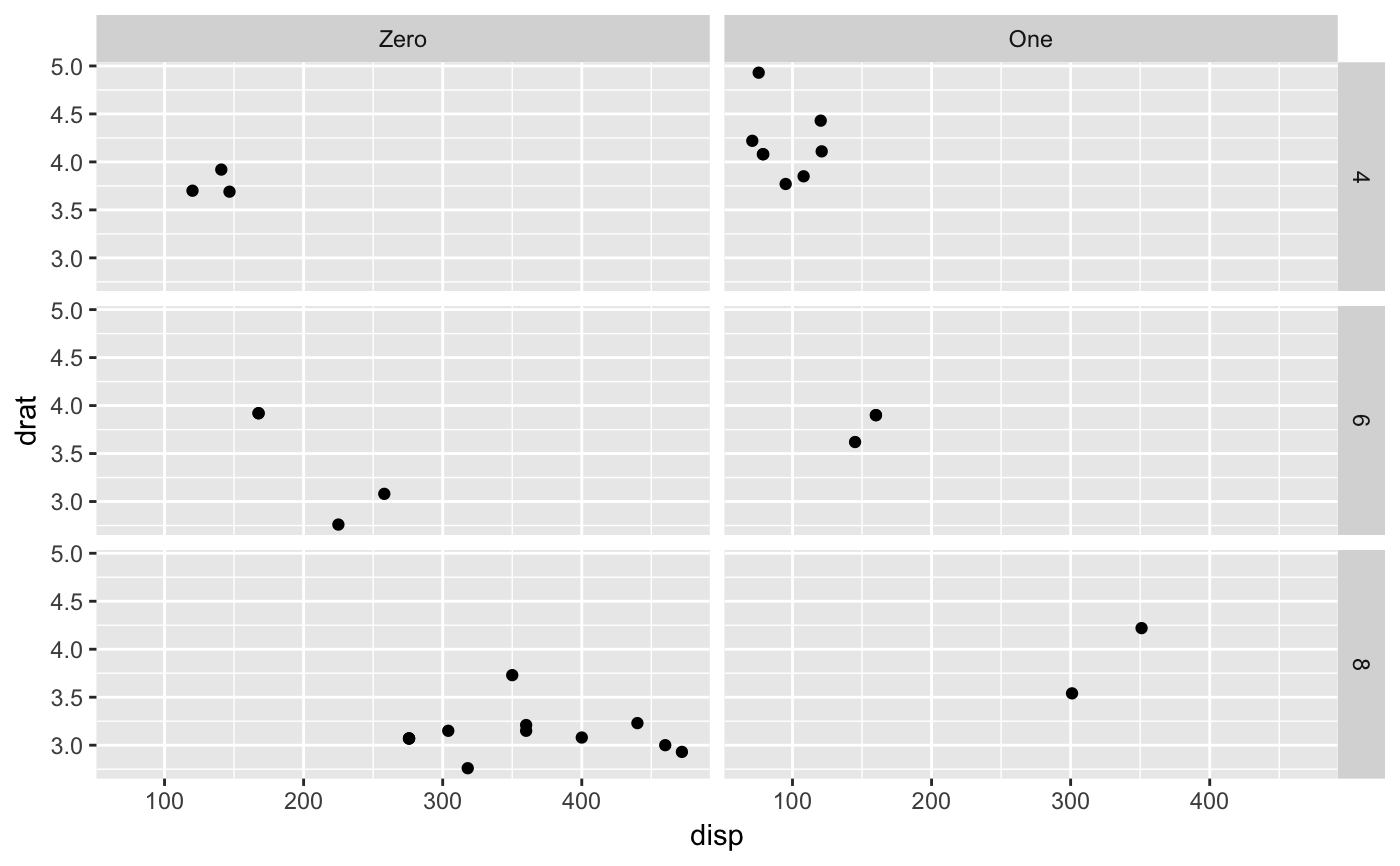This transforms objects to labeller functions. Used internally by
labeller().
as_labeller(x, default = label_value, multi_line = TRUE)
Arguments
| x | Object to coerce to a labeller function. If a named
character vector, it is used as a lookup table before being
passed on to |
|---|---|
| default | Default labeller to process the labels produced by lookup tables or modified by non-labeller functions. |
| multi_line | Whether to display the labels of multiple factors on separate lines. This is passed to the labeller function. |
See also
Examples
# Rename labels on the fly with a lookup character vector to_string <- as_labeller(c(`0` = "Zero", `1` = "One")) p + facet_wrap(~am, labeller = to_string)# Quickly transform a function operating on character vectors to a # labeller function: appender <- function(string, suffix = "-foo") paste0(string, suffix) p + facet_wrap(~am, labeller = as_labeller(appender))# If you have more than one faceting variable, be sure to dispatch # your labeller to the right variable with labeller() p + facet_grid(cyl ~ am, labeller = labeller(am = to_string))



